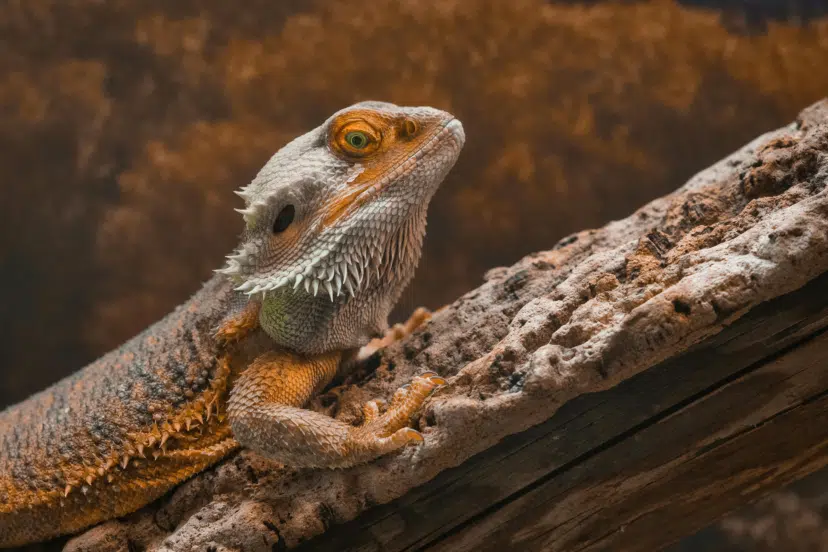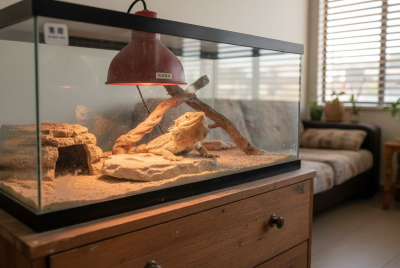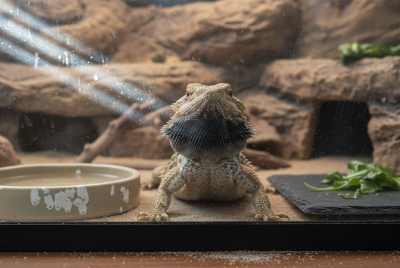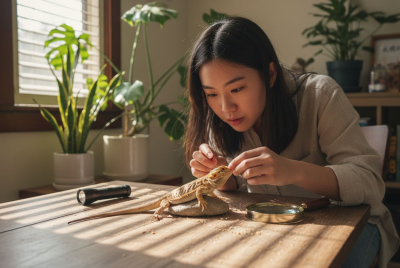Central Bearded Dragon: Complete Guide
Introduction to Central Bearded Dragons
As someone who has raised Central Bearded Dragons for years, I can tell you that these fascinating reptiles are more than just pets—they’re companions that will intrigue you with their quirky behaviors and calm personalities. Native to the deserts of central Australia, these reptiles are ideal for both beginner and experienced reptile owners alike. But owning a Central Bearded Dragon comes with the responsibility of providing the right care, and that starts with knowing exactly what they need.
Why Central Bearded Dragons Make Great Pets
Central Bearded Dragons are not only easy to care for, but they are also friendly and hardy creatures. They can adapt to a variety of environments, and once you’ve set up their home properly, you’ll find they’re quite low maintenance. Plus, they’re social, docile, and great with handling, making them perfect for individuals or families looking for a reptile companion.
Choosing the Right Enclosure for Your Central Bearded Dragon
Your dragon’s home, or vivarium, is perhaps the most important investment you’ll make. It’s where they’ll spend most of their time, so you want to ensure it’s safe, comfortable, and stimulating.
Enclosure Size and Material Options
When it comes to choosing an enclosure, size matters. For an adult Central Bearded Dragon, a 40-gallon tank is the bare minimum, but I recommend going bigger—think 75 to 120 gallons. You want to give them room to roam, bask, and explore. As for materials, glass enclosures are popular because they retain heat well and offer great visibility. Wooden vivariums are another option, especially if you need to better control the temperature in colder climates.
Setting Up a Safe and Comfortable Habitat
Once you’ve chosen your enclosure, it’s time to create a welcoming habitat. The key is replicating their natural desert environment. Be sure to add climbing branches, rocks, and hideaways where they can feel secure. You also need to ensure they have a cool side and a warm side, which we’ll cover more in the lighting and heating section.
The Perfect Substrate for Your Bearded Dragon’s Habitat
Choosing the right substrate for the vivarium floor is crucial because the wrong choice could lead to health problems like impaction (blockage in the digestive system).
Substrate Options: What’s Safe, What to Avoid
I recommend using reptile carpet, newspaper, or ceramic tile as substrates. These options are easy to clean and pose no risk of ingestion. On the other hand, avoid loose substrates like sand or wood chips, which can cause impaction if ingested by your bearded dragon. Even though sand looks natural, it’s best left out of your setup.
Cleaning and Maintaining the Substrate
To keep your bearded dragon healthy, spot clean the substrate daily by removing waste and leftover food. Every 1-2 weeks, give the enclosure a deep clean by replacing the substrate entirely and disinfecting the enclosure with a reptile-safe cleaner.
Lighting and Heating: Creating the Right Environment
Bearded dragons rely on external heat sources to regulate their body temperature and UVB light to synthesize Vitamin D3, which helps them absorb calcium.
The Importance of UVB Light
Without adequate UVB exposure, your Central Bearded Dragon could develop metabolic bone disease, a serious and potentially life-threatening condition. UVB light should be on for about 10-12 hours a day, and the bulb should be replaced every 6-12 months, even if it still emits light—UVB levels diminish over time.
Heating and Temperature Requirements
Creating a temperature gradient is essential for your bearded dragon. The basking area should be between 100-110°F, while the cooler side of the enclosure should be around 75-85°F. Use thermometers on both sides of the enclosure to monitor and adjust the heat accordingly.
Feeding Your Central Bearded Dragon: Diet Essentials
Feeding your bearded dragon properly is key to their health and well-being. A balanced diet of insects, vegetables, and occasional fruits will keep your dragon thriving.
Staple Foods for Bearded Dragons
Live insects like crickets, dubia roaches, and mealworms should make up the bulk of your bearded dragon’s diet, especially when they’re young and growing. As they mature, they’ll need more vegetables in their diet. Collard greens, mustard greens, and squash are excellent options.
Safe Vegetables, Fruits, and Insects
Vegetables like kale, dandelion greens, and bell peppers are great daily staples. You can also offer fruits like blueberries or apples as occasional treats. Be sure to gut-load the insects before feeding them to ensure they are nutritious.
Hydration: How to Keep Your Dragon Properly Hydrated
Bearded dragons don’t drink a lot of water in the wild, but it’s still important to provide fresh water in their enclosure.
Watering Tips
Place a shallow water dish in the enclosure and refresh it daily. You can also mist your dragon lightly every couple of days. They might not drink from the dish, but they’ll absorb moisture through their skin.
Signs of Dehydration and Overhydration
A well-hydrated dragon will have a healthy, plump appearance with clear, bright eyes. If you notice sunken eyes, wrinkled skin, or lethargy, these could be signs of dehydration.
Handling and Socializing Your Central Bearded Dragon
Central Bearded Dragons are generally friendly and enjoy being handled, but you’ll need to gain their trust first.
Best Practices for Handling
Always support their entire body when picking them up and avoid sudden movements. Start with short handling sessions and gradually increase the time as they become more comfortable with you.
Building Trust with Your Bearded Dragon
Talk to your dragon softly, and handle them gently. Over time, your bearded dragon will associate you with safety and may even look forward to being held.
Health and Wellness: Monitoring Your Bearded Dragon’s Health
Keeping a close eye on your bearded dragon’s health is vital for catching early signs of illness.
Common Health Issues to Watch For
Some common health concerns include metabolic bone disease, respiratory infections, and parasites. Be on the lookout for symptoms like lethargy, lack of appetite, or abnormal bowel movements.
Regular Check-Ups and Preventative Care
Schedule regular check-ups with a reptile vet, especially if you notice any unusual behavior or physical symptoms. Preventative care is key to keeping your dragon healthy.
Conclusion: Providing a Long, Happy Life for Your Bearded Dragon
Central Bearded Dragons are wonderful pets that bring joy and companionship. By providing the right care, from the perfect enclosure setup to a balanced diet and regular handling, you can ensure that your bearded dragon lives a long, happy, and healthy life.
FAQs
1. How often should I feed my Central Bearded Dragon?
Younger dragons should be fed 2-3 times a day, while adults can be fed once a day or every other day depending on their size and activity level.
2. Can I house multiple bearded dragons together?
It’s generally not recommended. Bearded dragons are territorial and housing them together can lead to stress or aggression, especially between males.
3. Do I need to mist my bearded dragon?
Occasional misting can help with hydration, but it’s not necessary daily. Fresh water should always be available.
4. How often should I replace the UVB light bulb?
UVB bulbs should be replaced every 6-12 months, even if they still emit visible light, as their UVB output diminishes over time.
5. Why is my bearded dragon not eating?
Loss of appetite can be due to improper temperatures, stress, illness, or a change in environment. If the issue persists, consult a reptile vet for guidance.




